Real sausage is an emulsified mixture of meat, fat and seasoning. The basic difference between a sausage and a sausage lies in the proportions of these ingredients and the emulsification techniques, which transform the mixture into a homogeneous and creamy mass, often aerated due to the type of process adopted. The important thing is that the mixture is very creamy, delicate and tasty. Unlike products offered by large industries, it is not necessary to add large amounts of proteins and vegetable emulsifiers, such as soy protein and lecithin. Unfortunately, these economical industrial products have given sausage this label as a low-cost, low-quality product, and unfortunately, rightly so, as the common sausage found in supermarkets is horrible, rubbery and has an artificial flavor. But, the real sausage is rich in flavor, quality and has a creamy texture! Just make it at home, choose a good supplier and look at the ingredients rather than the price when buying.
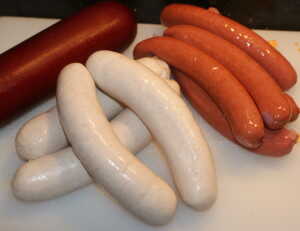
Equipment used to make sausage
- Meat grinder;
- Mixer with flat paddle;
- Bagging machine (electric or manual sausage stuffer);
- Very sharp knife.
Ingredients for making sausage
- 500 grams of lean meat – usually beef and/or pork;
- 250 grams of crushed ice – it can be water, wine or some broth;
- 375 grams of pork fat – preferably from the skin layer or lard;
- 20 grams of salt – if you use salty broth, reduce the salt;
- 25 grams of skimmed milk powder – works as an emulsifier, stabilizer and humectant.
Procedures
Making a sausage is a slightly more complicated process than making a sausage, the procedure is not difficult, but you need to get the proportions of the ingredients right and, just like when making sausages, pay attention to the temperatures throughout the process.
Always keep everything cold, and this applies to dishes, equipment, meat, fat and liquids added to the recipe. Leave them in the freezer before using them. It is recommended to leave the meat and fat in the freezer and use them when they are almost frozen. Salt is added at a rate of 10 grams for every 500 grams of meat and fat, remember that with salt it is always better to err on the side of less and then get it right in the end, as the opposite is much more complicated and laborious to correct.
Grind and mix
Chop the meat with a knife, take the opportunity to remove the nerves. Pass the meat and fat through a meat grinder with the wide disc, return to the freezer if it has warmed up a little, season with salt and, if necessary, add sodium nitrite to prevent the proliferation of bacteria. Return to the freezer if the mixture has warmed up a little. Remove from the freezer, add the well-chilled or frozen and chopped liquid and pass again through the meat grinder with the finest grinding disc. Return the mixture to the freezer.
Emulsifying the Sausage Filling
This is the most important part that turns a sausage into a sausage. Remove the mixture from the freezer and add it to the beater with the flat paddle, always keeping everything well chilled. Add the seasonings and beat on high for 4 minutes. The mixture should be very pasty and uniform.
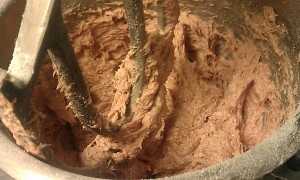
Add powdered milk to help emulsify, stabilize and retain moisture. Beat for another 2 minutes. Turn it off and keep it refrigerated to fill the stuffing in the casing and finally transform it into sausages.
Sausage stuffing test
To test whether the filling has the desired taste, take a portion, wrap it in plastic wrap and let it boil in a pan, remove and taste. Ideally, the inside of the sausage should be at 65 degrees so you can remove it from the boil and try it. Adjust the seasoning and salt if you notice any problems. If the filling has become floury, falling apart, or with fat sticking to the plastic, this will be a bad sign, as something has probably gone wrong during the emulsification, possibly the temperature has risen too much during the process.
Stuffing the sausage
Stuff the sausage in the same way you would stuff a sausage (for more details, read How to make sausage?), use a hand-crank, electric filler or wide funnel. In the case of sausage, as it has a pasty consistency, it is also possible to use a bag with a piping tip to place the filling in the casing. But in all cases it is necessary to leave the tripe to soak for at least thirty minutes, then roll the entire tripe around the stuffer tube, push the filling into the tripe and finally twist or tie it approximately every 10 centimeters.
The correct way to eat sausage
The correct way is to keep the water for cooking the sausage at a temperature between 80 and 90 degrees, that is, without letting the water boil. If you have a culinary thermometer, monitor the internal temperature of one of the sausages, when it is at 65 degrees (around 15 and 20 minutes), remove them from the heat and place in another container with very cold water for about 5 minutes to stop cooking. The temperature should drop to 60 degrees. After cooking, the sausage can be consumed or refrigerated for later reheating by boiling, in a frying pan, barbecue or oven. Always frying in a frying pan is a good option as the caramelization resulting from this process adds flavor to the sausage. If you want a more smoky flavor, roast them on the barbecue and lightly toast the outside.

-
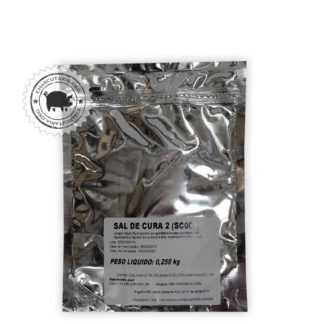 Curing salt 2R$ 8,00
Curing salt 2R$ 8,00 -
 Curing salt 1R$ 8,00
Curing salt 1R$ 8,00 -
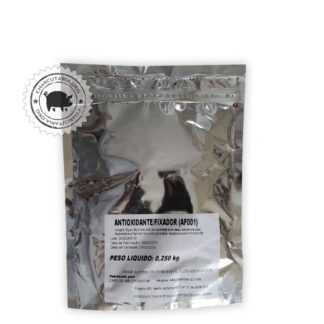 Fixative AntioxidantR$ 23,00
Fixative AntioxidantR$ 23,00 -
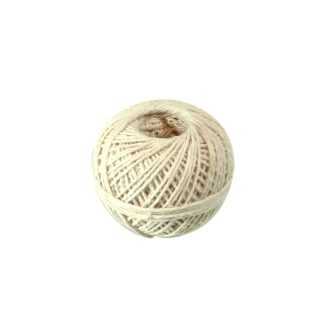 Culinary twineR$ 7,90
Culinary twineR$ 7,90 -
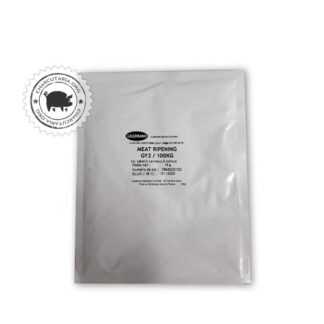 Starter CultureR$ 69,90
Starter CultureR$ 69,90 -
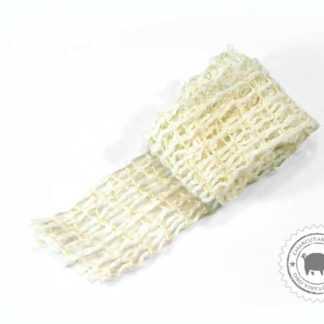 Culinary elastic net 50mmR$ 15,00
Culinary elastic net 50mmR$ 15,00 -
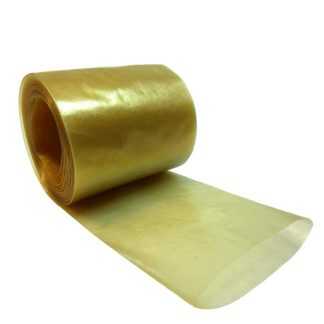 Collagen casing 45mm roll 5 meters salamiR$ 19,00
Collagen casing 45mm roll 5 meters salamiR$ 19,00 -
 Culinary elastic net 65mmR$ 18,00
Culinary elastic net 65mmR$ 18,00 -
 Collagen casing 80mm cup and salamiOriginal price was: R$ 39,00.R$ 29,90Current price is: R$ 29,90.
Collagen casing 80mm cup and salamiOriginal price was: R$ 39,00.R$ 29,90Current price is: R$ 29,90. -
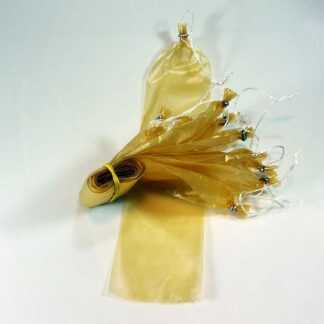 Salami collagen casing 45mm 10 units tiedR$ 19,00
Salami collagen casing 45mm 10 units tiedR$ 19,00 -
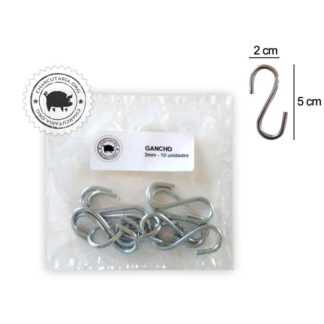 Galvanized HookR$ 12,00
Galvanized HookR$ 12,00 -
 Natural pork casing for sausageR$ 52,00
Natural pork casing for sausageR$ 52,00

My wife can't use powdered milk, what could she use to emulsify it? Thanks
You can do it without or use one emulsifier, like this. You can do it without it too, it's optional to give it more consistency, but you can do it without it.
Hello! Your content is of great quality, thank you for sharing! I'm starting to produce sausages and I want to purchase a bagging machine, which one do you recommend? What about materials or courses to learn, can you give tips too? Thank you in advance!
Hi Edlane. Regarding the bagging machine, you can buy the national brands CAF, Piceli and Metvisa. There are other good ones too. If you want a small, very cheap aluminum one, you can buy the Chinese one from the Master Feng brand, search for “aliexpress master feng” and you will find it straight from China for a good price.
Regarding materials, you can download the manuals that we make available for free: https://charcutaria.org/categoria-produto/manuais/
Do not use salt to cure the sausage
Is it possible to make sausage from shrimp, fish, among others?
Hi Eduardo Marcelo, yes, you can make sausage with fish and seafood, the principle is the same. However, they are generally meats that release a lot more water, so you will have to use more starches or vegetable proteins to obtain adequate stability. At the moment I don't have any recipe to give you.
Good afternoon! Do you have a Vienna sausage recipe?
Willian, Vienna sausage is generally made with 40% beef, 40% pork and 20% pork bacon fat. The beef can be veal or another lean cut and pork or ham is the most suitable.
To this weight, add 2% of salt, 20% of ice, 0.24% of curing salt, 0.25% of antioxidant and any condiments you want. That's the basis.
Wow, I just saw this recipe! How wonderful! In this case, do you add seasonings to the person's taste or is there no need and the salt or broth you suggest is enough? After cooking the sausage, do you remove the “casing” or with the lamb casing it is practically imperceptible when eating?
Hi Matheus, you can eat it with the lamb tripe, it is very soft. The casing is removed when it is collagen (optional as it is edible) or cellulose, which is not edible. The base seasoning is as per the recipe, you can add more according to taste.
Good afternoon Eduardo,
How much liquid annatto coloring is per liter? Congratulations on the website and the explanations. Thank you for your attention.
Hi Rosangela, it depends on the manufacturer as the concentration can vary, but generally the dilution is around 1 in 40. 1 liter of annatto for 40 liters of water.
Eduardo Schulze, do you know a Frankfurt sausage supplier? Send it to the state of RS or send it to cities, I really need these sausages, please contact me if possible!
Good sausages are hard to find these days. Try eurofrig, they are good.
Could you indicate which processor to use if the person wants to sell and if they just want to produce for consumption? A video showing this entire text process would be really cool.
For professional use, the ideal is a piece of equipment called a Cutter for refrigerators. For home use you need a processor with very sharp blades and a powerful motor, close to 1000W and with a large bowl. The biggest concern is to reduce heat generation, which is why power and capacity are important. Small equipment with a weak engine works at its limit and heats up the dough a lot. This recipe for homemade chicken sausage There's a video at the end.
Hello, I ate a sausage in a bar in Louveira – I think it must have been from Berna. I had never tasted a sausage like that. I only knew the industrial one. I fell in love. I have a butcher shop and I already make sausages.
and now I want to change the concept and try to do some different things. I'm studying and taking some courses. but I generally only find material about sausages. of sausage, very little.
Do you have any tips for a German-style sausage, a red one that had a smoked flavor? I do not know her name.
Joao, I believe he ate Bock, Pinguim or, as he was red, it could very well have been Frankfurter. The smoked flavor may have come from direct burning or immersion in liquid smoke, depending on the recipe. I have many recipes in books, on the website I only have one Bratwurst 100% ham. In general, 35% of pork shank, 35% of beef breast and 30% of pork belly. The percentage and cut of meat can vary, it's just the fat that is best to always keep close to 30%. It can also have pork skin, chicken skin, starches, soy protein and collagen powder. The important thing about sausage is the emulsion, it has to be very well made or everything will fall apart.
Without curing salts, how long does this product last in the refrigerator and frozen?
Without additional preservatives, the shelf life will be the same as well-seasoned and refrigerated meat, that is, around 5 days. Some condiments are bactericidal and fungicidal, such as garlic and onion. Acidification will also increase durability. Frozen for at least 3 months, but the texture may deteriorate when thawed.
Hello, I didn't see the procedure in the recipe to turn the sausage red.
The external reddish color is obtained when cooking, with water and liquid annatto coloring. It is also possible to add color to the dough using carmine dye.
Hi. I'm starting to make sausages at home and after reading your article I was unsure whether it's better to use a meat grinder + mixer, or a food processor. Another thing, my sausage didn't have a good texture, I didn't follow your recipe, but I respected the proportions of meat and fat... It wasn't creamy because of the ice? I didn't add ice... Or was it because I didn't use the mixer? Thanks
Hi Betsi, it is possible to make it in a mixer or in a food processor, both ways work but the results are different. In the mixer you need to grind it on a fine disc twice and the result is a little grainy. In the processor the result is smoother, finer and more homogeneous. If you are starting out and don't have professional equipment, I recommend you try this homemade chicken sausage, as chicken meat is softer for the processor to work with and emulsifies easier, especially with the skin attached.
Thank you very much! I'll try to make the chicken one.
Great blog! I'm starting out in the world of charcuterie. I will be a persistent reader and questioner. First question: is lamb intestine the best option for sausages?
Hi Cristiano, you can ask as much as you want and I'll try to answer with the little I know about this vast art! Lamb tripe is the most recommended as it is thinner and softer, making it easier to chew and having the typical shape of a hot dog sausage. But precisely because it is thin and delicate, it is more difficult to work with, as it bursts easily. In another recipe I made for German sausage Bratwurst, I used medium caliber pork casing. The Bock and Pinguim sausages, which are also well known in Brazil, have a high caliber. In addition to natural casing, you can also make it with collagen casing, which is more rigid and harder to chew, but is very easy to work with. So, there is no rule, you have to weigh the advantages and disadvantages of the product you intend to make!
I wanted to know if I could use ham to make it? I was thinking about reducing the amount of bacon a little, since ham is not a lean meat.
Hi Yuri, I posted a sausage recipe using only pork shank, which was very fatty, see Natural Homemade German Bratwurst Sausage Recipe. For me, the amount of fat in this recipe was great, I didn't need to add more.
How can this happen? I'm open-mouthed knowing that the sausage is made like this
Real sausage is an emulsified mixture of meat, fat and seasoning. The basic difference between a sausage and a sausage lies in the proportions of these ingredients and the emulsification techniques, which transform the mixture into a homogeneous and creamy mass, often aerated due to the type of process adopted. The important thing is that the mixture is very creamy, delicate and tasty. Unlike products offered by large industries, it is not necessary to add large amounts of proteins and vegetable emulsifiers, such as soy protein and lecithin. Unfortunately, these economical industrial products have given sausage this label as a low-cost, low-quality product, and unfortunately, rightly so, as the common sausage found in supermarkets is horrible, rubbery and has an artificial flavor. But, the real sausage is rich in flavor, quality and has a creamy texture! Just make it at home, choose a good supplier and look at the ingredients rather than the price when buying.
The softening resulting from this process adds flavor to the sausage. If you want a more flavor
I would like to thank you (VERY) for sharing the recipes. There are evils that come for good. In my case, I arrived here because of Operation Carne Fraca (Lava Jato). We eat (little) sausage, but even so, I can avoid processed products and I do so. After this, I have a strong reason to do it at home. If possible, I would like to receive recipes that can be prepared by hand. I'm going to buy a meat grinder with the funnel (to stuff sausages and sausages). I have a good mixer, knives and a few other accessories that will come in handy. Plus lots of seasonings. I believe you can access my email, so thank you again in advance.
This operation that closed large refrigerators further awakens the need to know what we consume. Sausage, for example, is so easy to make that there is no reason to buy it ready-made. Sausage is more difficult, but over time you'll get the hang of it. If you have a good food processor, with a very sharp blade, it's even better than a mixer.
Are both sausages and sausages to be consumed immediately after preparation or can I freeze them for some time? Thanks!
Priscila, yes you can freeze it, but remember that slow freezing generates large ice crystals that break and damage the structure of the meat, so the product will never be of the same quality. For marketing, the ideal is the IQF system (individually quick frozen). It lasts between 3 and 6 months frozen.
There is a way to replace pork fat as I am allergic to pork and its derivatives.
Evandro, you can try using a mix of lean and marbled beef cuts that is close to 20% to 30% of fat, so there will be no pork in the composition. Take a look at this discussion on beef or pork fat in the sausages.
Hello, what are marbled cuts? Is termite an example?
Hi Jackson, marbled cuts are those that have a lot of intramuscular fat. The termite is well marbled.
Hello, what equipment and size is the right one to fill the sausage casing?
Very explanatory, I liked the Californian recipe, I can apply it to Vienna sausage. It's good, thanks.
Hello! Thanks for the recipe! Have you ever tried changing the seasonings? Like dried peppers and herbs? If so, can you give some suggestions? Thanks!!
Dark beer, brown sugar, dehydrated garlic, black pepper and cloves.
Thanks!!!! 😉
Hello. I'm interested in learning how to make sausages and would like a recommendation for this mixer. What is the most suitable equipment, could you recommend a brand or reference? Thanks.
The post talks about the orbital mixer, but it is not ideal equipment. On a small scale, the KitchenAid Pro Line Multiprocessor is good. If you are going to do it on a slightly larger scale, I recommend a colloidal mill or a specific cutter for emulsifying meat. The important thing is to be powerful and have a good cutting blade, as it needs to be quick to avoid overheating and breaking the emulsion. The manufacturer Skymsen makes good products and has a small cutter, it could be a good option.
These supermarket sausages also have a lot of mechanically separated meat (CMS), which is “separated meat” from the ground carcass! Not even a dog can separate so much “meat” from the bone. In the end, this pile of crushed bone gives that horrible grainy texture to these low-cost sausages. They add 60% of CMS, a lot of skin, jowls, emulsifier, stabilizer to incorporate liters of water, coloring, preservative… just first-class stuff!
After mixing > embedding > cooking > cooling, can I leave the sausages hanging on a refrigerated butcher's counter for up to 2 days? Will it taste better when fresh than if it has been exposed for 2 days?
Grateful !
A sausage emulsion has a lot of water, a refrigerated counter can remove a lot of water in 2 days, ideally they should be vacuum sealed. At least cover with PVC film to avoid drying out.
The description of the necessary ingredients does not include nitrite or the amount to be used!
Sausage is generally cooked at the end of the process, so there is not much need to use nitrite as a pathogen inhibitor. If you are smoking, aging or want the benefit of color and flavor from curing, use 2.4g of curing salt for every 1kg of meat.
I really enjoyed the recital and the process.
I'll try to do
If anyone has information about natural and synthetic casings and the most common characteristics about them?
http://charcutaria.org/embutidos/tipos-de-tripas-naturais-e-artificiais/
I would like to receive a ham recipe
I don't recommend trying ham without having the method of pressing the ham, but come on, I'll tell you more or less the 100% meat ham process that I made, so you can see if this is really the thing you want to face, ok? First, the ham I'm going to talk about is cooked ham, there are several other raw and smoked types. I won't quote quantities, as the recipe is at home and I'm away from home right now. I start by finding a good butcher, I don't usually serve a supermarket butcher who only takes steak from vacuum-packed pieces. It has to be the one who butchers the pig and who knows how to remove the soft pork leg from the ham, as the soft leg has the characteristic curve of ham and this really helps. Afterwards it is necessary to make a tempered brine solution. The ham seasoning is called California seasoning. There are numerous seasoning manufacturers and then you must follow the proportion indicated by the seasoning manufacturer, this is where things get complicated, each seasoning manufacturer uses its own ham production “system” with emulsifiers, super yield, nitrates and nitrites, so it is difficult to do without buying the “complete package” to have the preservatives… Read more "
Is there a specific type of sausage that uses beef or pork, or something that mixes the two?
The Vienna sausage, which is the high quality sausage found in the supermarket, is a mixture of beef (in front as it gives more “binding”), lean pork and pork bacon. If the meat is good, it doesn't even need an emulsifier. I've already made white sausage in the multiprocessor using only salt (2%), ice (10%), pork filet mignon (60%) and bacon (30%). It was better and cheaper than any commercial sausage
The “hot dog” type sausage that we commonly buy in bulk in the supermarket uses chicken skin (which is legally classified as poultry protein) replacing a large part of the beef, pork and bacon, and gives it an emulsifier to make it stick. turns on.
For intense red coloring, you will need to prepare a dye solution. red intyenso is made from the butt of the cochineal ant, less intense reds are made with others, such as red paprika, annatto, etc. where you dip the sausage after cooking in hot water with the coloring solution and then cool the sausage in cold salted water to set the coloring.
Regarding the front meats, is there any you recommend? I was thinking about duckling or soft thigh.
Sorry, I don't understand, you should cook the sausage in water with the coloring, is that it?
That's it, the external reddish color is obtained when cooking, with water and liquid annatto coloring. It is also possible to add color to the dough using carmine dye.
Very cool website,
Is there a more specific sausage recipe, in which case the sausage will be white, how do I make the sausage turn reddish, paprika or paprika?
Cleber,
If you want something more natural, you can replace part of the ice with beetroot and carrot juice. Or add tomato paste, saffron or paprika itself (which can give a specific taste). Industrial alternatives include cochineal carmine (made from an insect), caramel IV, red 40 or other colorings that you can easily find in confectionery stores, for example.
Thank you very much for the tips!!!!
very very good, super explanatory site with excellent techniques.
grateful